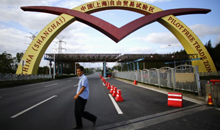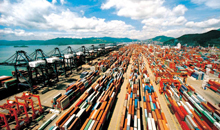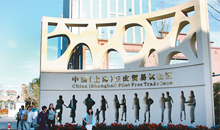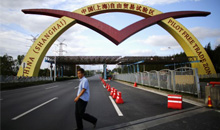China to streamline Yangtze River customs clearance
Measures enabling speedier customs clearance in the China (Shanghai) Pilot Free Trade Zone (FTZ) look set to be rolled out to other customs points along the Yangtze River.

Measures enabling speedier customs clearance in the China (Shanghai) Pilot Free Trade Zone (FTZ) look set to be rolled out to other customs points along the Yangtze River.
The General Administration of Customs (GAC) announced on Monday that it is mulling how to apply this streamlining, first piloted in the new FTZ, to other customs points along the Yangtze.
The Yangtze River belt is dotted by 70 customs checkpoints with regulatory privilege to engage in export-oriented manufacturing and processing. Custom authorities hope to improve coordination among them to ensure smooth movement of cargoes and promote high-end manufacturing.
While cities like Shanghai, Nanjing and Suzhou located at the downstream of the river are China's manufacturing bases and financial hub, provinces on the Yangtze's upper reach are centers of industrial production and agriculture.
Cargoes that enter China through customs at the Shanghai FTZ - a 29-square-km area consisting of four former bond areas -- may now be stored before they are declared to customs authorities, a move that has reversed the practice at other checkpoints in China but one that has proved efficient for trade.
A number of initiatives to improve customs clearance have been proposed and are being piloted in the Shanghai zone in the hope that they may be introduced to other customs checks to unify regulation and enable faster movement of goods between Shanghai and other checkpoints.
Speedier customs clearances and an improved logistics network will also ease delivery of agriculture products and natural resources and thus benefit commodity trading.
Authorities are mulling commodity trading platforms at the Shanghai trade zone to attract international investors to participate in commodity trading and seek a greater say in pricing.
Chinese Premier Li Keqiang in late April called for the creation of an "economic belt" along the Yangtze to promote better coordination in industrial development and more efficient allocation of resources among up to 11 provincial regions traversed by the river.
These regions on the so-called "economic belt" are home to more than 40 percent of China's population and contribute 40 percent of the nation's economic output.
GAC spokesman Zhang Guangzhi said on Monday that the administration is working to make cargoes clear at customs checks along the Yangtze more easily.
Zhang added that broader reform to improve customs clearance in the 11 provinces will be enacted soon. Shanghai has cooperative mechanisms with upstream provinces and western Chinese economic hubs like Chengdu and Chongqing. These mechanisms will expedite cargo movement among bonded areas and cut red tape.
The GAC also announced a package of measures to stimulate trade last week. These measures span from removing administrative barriers to promote customs integration to streamlining procedures and realigning regulations covering an increasingly diverse range of trades.





 沪公网安备31010402003309号
沪公网安备31010402003309号



